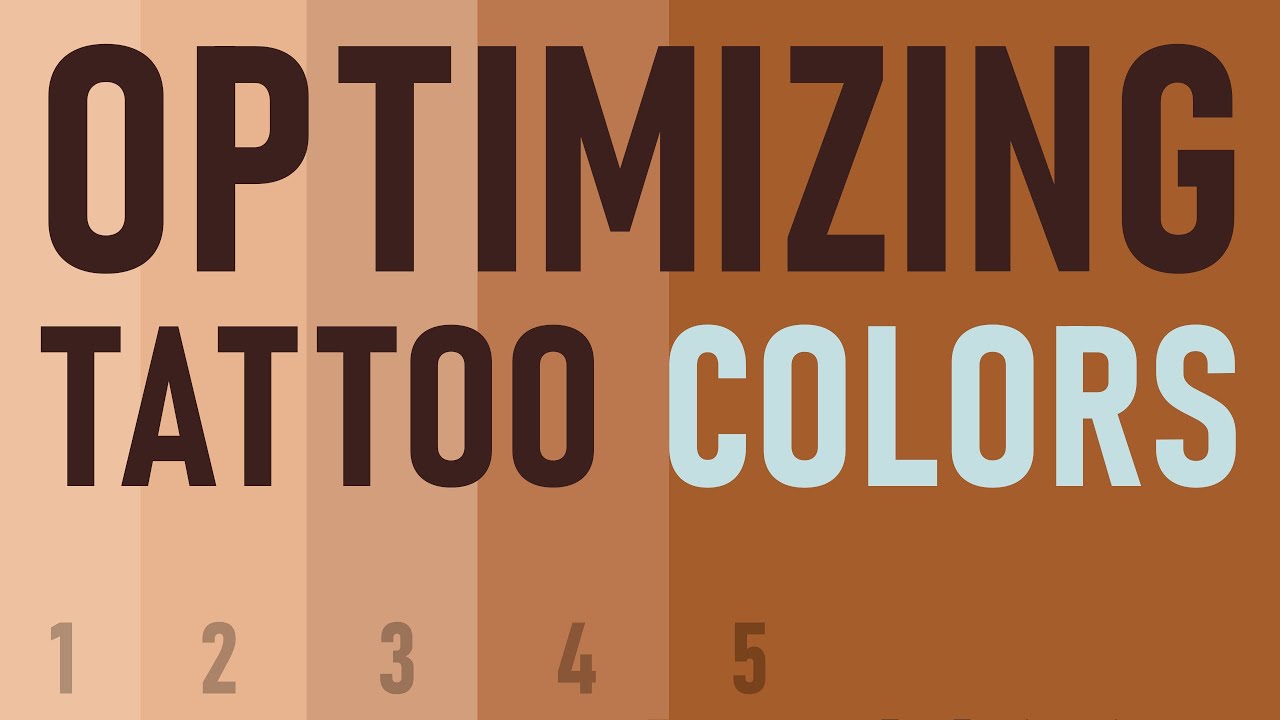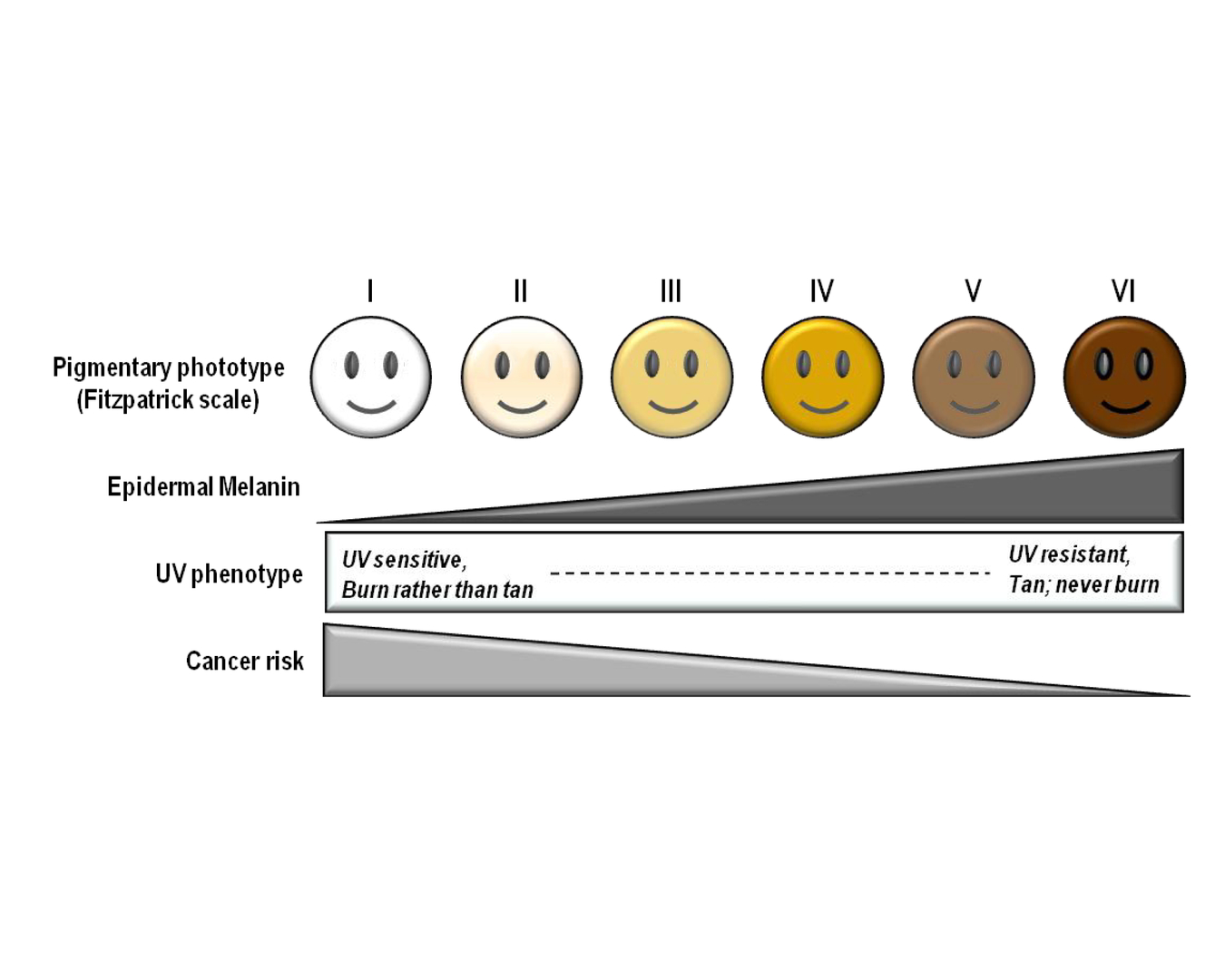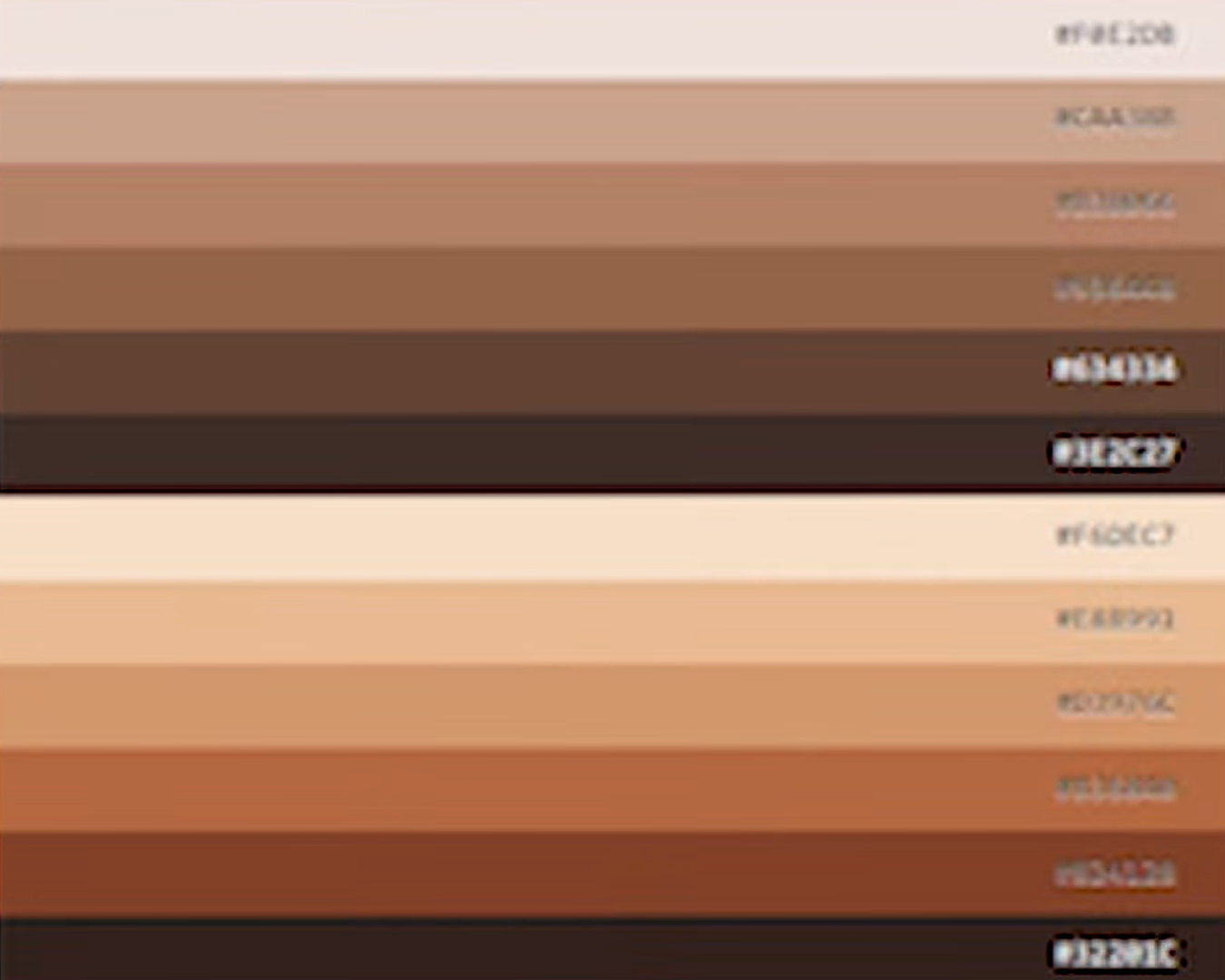Optimizing Tattoo Colors - Skin Classification Method

Skin Classification Method
“...as a first step, we looked at all of the skin classification methodologies that are out there for medicine, and found some massive holes in there for tattooing. It wasn't capturing the full color gamut of human skin...”
-Shawn Bellina, S8 Chemist
A classification system for the myriad of skin types would be a helpful starting point. It could generate ways for tattooers to communicate between each other, give advice, and allow tattooers to make a better decision knowing what tattoo inks worked better on what skin types.
What would something like this look like?
Potentially you’d have something simple, but very comprehensive, where even if your client doesn’t fall directly on any one section you’d have a good idea where they land. You’d probably want to consider having a warm and cool palette as well since some skin tones lean more towards either red or blue.

-The Fitzpatrick scale is a numerical classification schema for human skin color. It was developed in 1975 by American dermatologist Thomas B. Fitzpatrick as a way to estimate the response of different types of skin to ultraviolet (UV) light. - wikipedia
Though this scale is standard in the medical community for determining cancer susceptibility it is not nearly inclusive enough to use for tattooing. There are just too many variables it doesn’t account for, such as the Red (warm) and Blue (cool) variances between skin. Other scaling methods exist that are more comprehensive and wide ranging but are not nearly as intuitive.
The Image below is an example of what a good scale would look like, created by S8 Tattoos team of scientists. Not only does it cover a 12 tone range of skin colors, but it divides them into warm and cool variances.

What are the applications?
Systems like this would also allow parts of the industry, such as tattoo ink manufacturers, to create guides for tattooers and take out some of the uncertainty when making color choices. You could potentially stamp the side of a tattoo ink bottle with a set of “skin tone numbers” or create a chart on a manufacturers website that approximates what colors might be better suited for different situations. Some art supply manufacturers use a similar charts for paint and colored pencils to determine Lightfastness and Opacity
Watch the Full Episode:
Optimizing Tattoo Colors For Skin Types! Tattoo Physics Part 4 | Tattoo Overview | Episode 11
